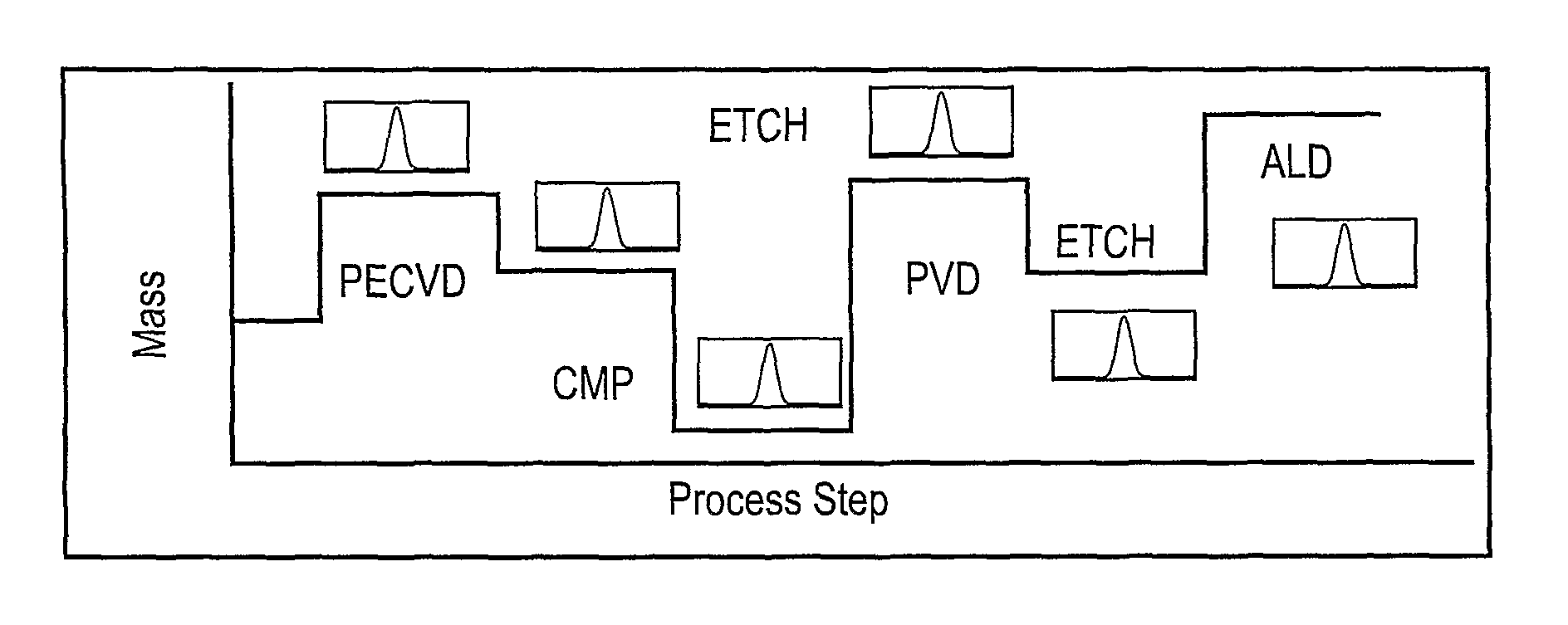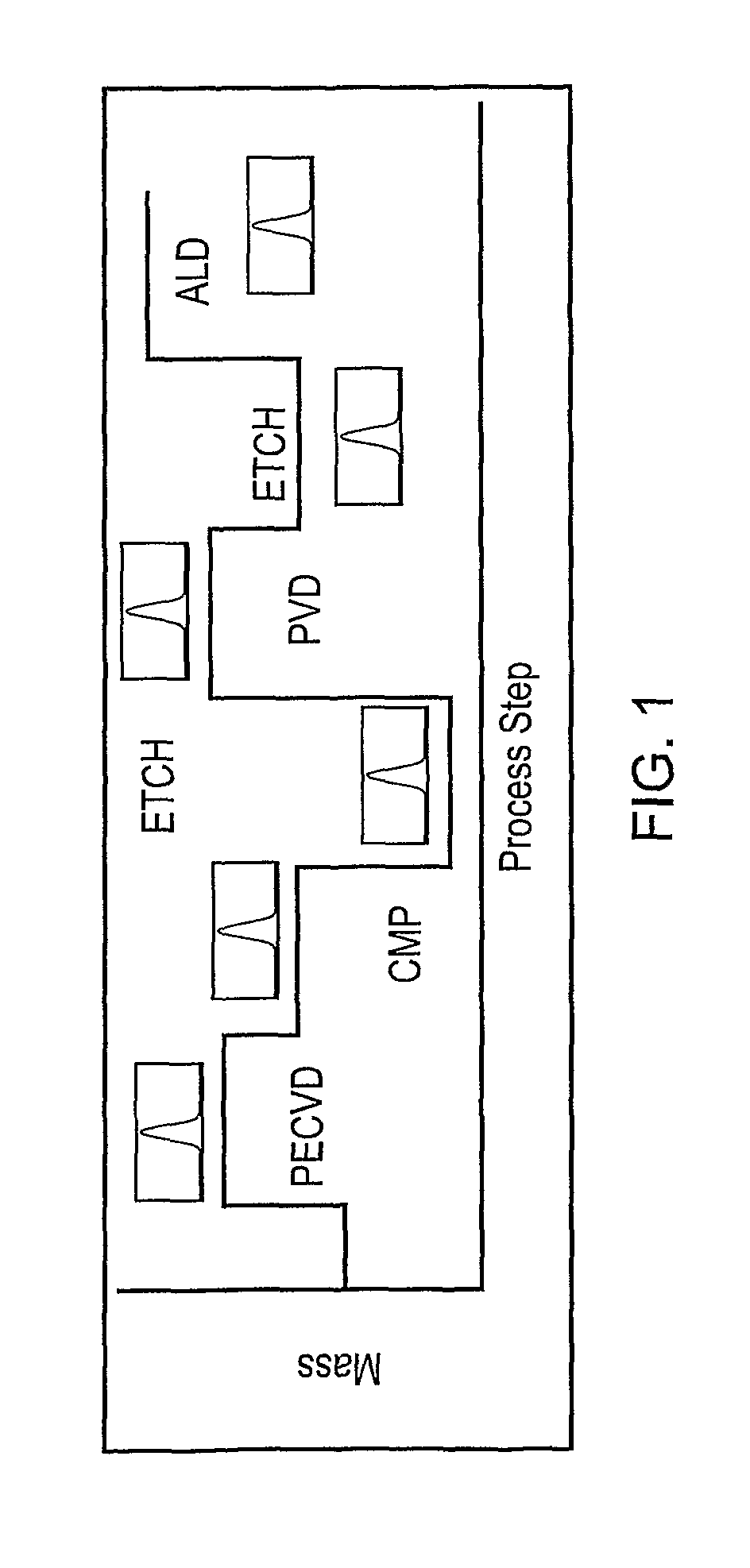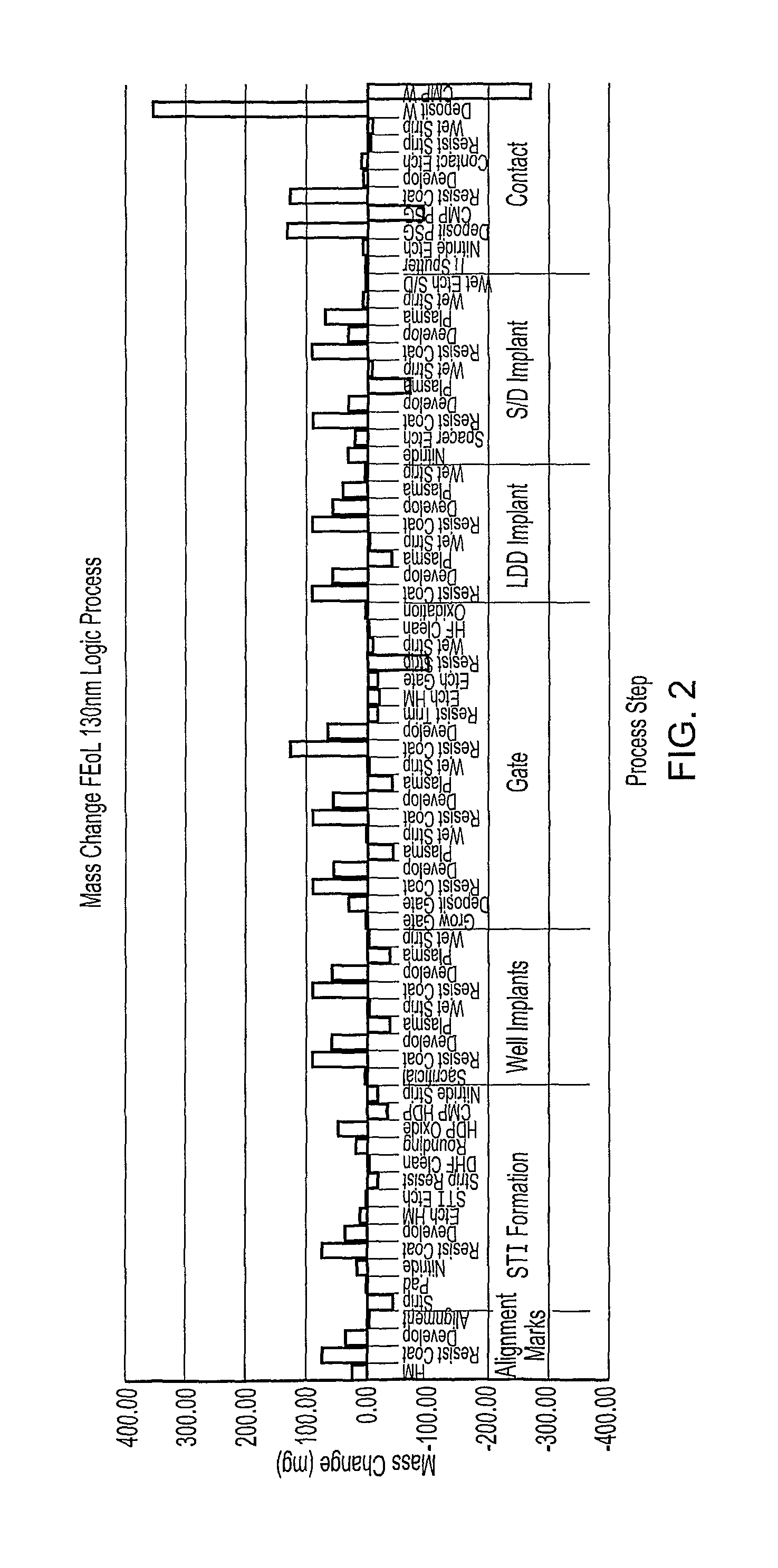Method of controlling semiconductor device fabrication
a technology of semiconductor devices and metrology, applied in semiconductor/solid-state device testing/measurement, testing/monitoring control systems, instruments, etc., can solve the problem of not being able to perform non-destructive stress measurement on thin sin films formed on product wafers, and achieve the effect of monitoring the effectiveness of any fabrication process step
- Summary
- Abstract
- Description
- Claims
- Application Information
AI Technical Summary
Benefits of technology
Problems solved by technology
Method used
Image
Examples
Embodiment Construction
Further Options and Preferences
[0059]FIG. 1 illustrates schematically the idea that every step in a semiconductor fabrication process involves a change in mass. Moreover, each process will have a characteristic mass change with its own distribution. The chart in FIG. 1 shows how the mass (on the y-axis, not to scale) of a semiconductor wafer may change according to the type of fabrication process it experiences. Thus, a plasma enhanced chemical vapour deposition (PECVD) increases mass, chemical mechanical polishing (CMP) and etch processing decrease mass, and physical vapour deposition (PVD) and atomic layer deposition (ALD) increase mass. Each of the mass changes has a different magnitude. An accurate mass measurement may be able to detect these changes to generate a measured mass change distribution for a plurality of semiconductor wafers which are treated. By comparing individual mass change measurements or the measured mass change distribution to a characteristic mass change dis...
PUM
 Login to View More
Login to View More Abstract
Description
Claims
Application Information
 Login to View More
Login to View More - R&D
- Intellectual Property
- Life Sciences
- Materials
- Tech Scout
- Unparalleled Data Quality
- Higher Quality Content
- 60% Fewer Hallucinations
Browse by: Latest US Patents, China's latest patents, Technical Efficacy Thesaurus, Application Domain, Technology Topic, Popular Technical Reports.
© 2025 PatSnap. All rights reserved.Legal|Privacy policy|Modern Slavery Act Transparency Statement|Sitemap|About US| Contact US: help@patsnap.com



